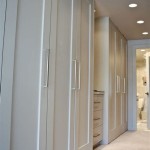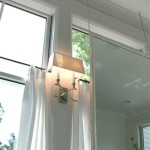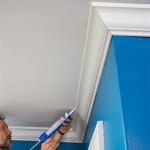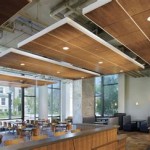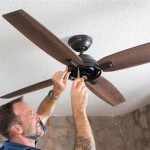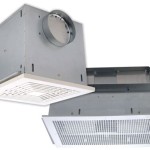Can Beadboard Be Used For Ceiling Tiles? Examining the Feasibility and Considerations
Beadboard, characterized by its distinctive vertical grooves and beaded edge, is a popular decorative paneling known for its classic and versatile aesthetic. Commonly used for wainscoting, backsplashes, and furniture accents, its visual appeal has led many homeowners and designers to consider its application beyond traditional wall paneling. One such application is its use as ceiling tiles. While beadboard can technically be used for ceilings, its suitability demands careful consideration of several factors, weighing both its advantages and disadvantages against the specific requirements of the space.
The question of whether beadboard is a viable option for ceiling tiles isn't a simple yes or no. The answer depends on project specifics, including the existing ceiling structure, the desired aesthetic, budget constraints, and most importantly, the environmental conditions of the room. Understanding these parameters is paramount before committing to using beadboard as a ceiling material.
Aesthetic Appeal and Design Versatility
One of the primary reasons beadboard is considered for ceiling applications is its inherent aesthetic appeal. Beadboard imparts a timeless, traditional charm often associated with historical homes and cottage-style interiors. Its vertical grooves add texture and visual interest, breaking up the monotony of a flat ceiling surface. This can be particularly beneficial in rooms with low ceilings, as the vertical lines can create an illusion of greater height.
Furthermore, beadboard offers design versatility. It can be painted any color to match or complement existing décor, allowing for seamless integration into various interior design schemes. It can also be stained to highlight the natural wood grain, offering a warmer, more rustic aesthetic. The individual strips or panels can be installed horizontally, vertically, or even diagonally, depending on the desired effect. This flexibility allows for creative expression and customization, making it a desirable option for those seeking to personalize their living spaces.
Beyond its core design characteristics, beadboard can be combined with other architectural elements, such as crown molding or decorative beams, to further enhance the ceiling’s visual appeal. These additions can create a more layered and sophisticated look, elevating the overall design of the room. The ability to integrate beadboard into a wider design context is a significant advantage.
Installation Considerations and Structural Requirements
The installation process of beadboard ceiling tiles requires meticulous planning and execution. Unlike standard ceiling tiles that are designed for drop-in grid systems, beadboard typically needs to be attached directly to the ceiling joists or furring strips. This necessitates a solid and structurally sound substrate to ensure proper adhesion and prevent sagging over time.
Weight is a crucial factor. Beadboard, especially when made from solid wood, can be relatively heavy. The existing ceiling structure must be able to support the added weight without compromising its integrity. Careful assessment of the joist spacing and load-bearing capacity is essential. If the existing structure is deemed inadequate, reinforcement may be required, adding to the overall cost and complexity of the project.
Moreover, proper ventilation is critical. If the space above the ceiling is unvented, moisture can accumulate, leading to mold growth and wood rot. Adequate ventilation should be ensured by incorporating vents into the ceiling or by upgrading the existing ventilation system. This is particularly important in bathrooms and kitchens, where humidity levels are typically higher.
Accuracy in cutting and fitting the beadboard is also essential for a professional-looking finish. Gaps and uneven seams can detract from the overall aesthetic and create opportunities for moisture to penetrate. Using appropriate tools, such as a miter saw and a level, is crucial. In addition, the installer should be proficient in measuring, cutting, and fitting the beadboard panels to achieve a seamless and visually appealing result. Using adhesive in conjunction with fasteners can significantly increase the longevity and structural integrity of the beadboard ceiling.
Finally, access to wiring and plumbing that runs above the ceiling needs to be considered. Attaching beadboard directly to the ceiling makes access for maintenance and repairs more difficult. Planning for access panels or easily removable sections is important to avoid future complications. This foresight can save significant time and expense in the long run.
Material Selection and Environmental Suitability
Beadboard is available in a variety of materials, each with its own advantages and disadvantages. Solid wood beadboard offers the most authentic look and feel but is also the most expensive and susceptible to moisture damage. MDF (Medium-Density Fiberboard) beadboard is a more affordable alternative that is less prone to warping and cracking. However, it is also more susceptible to water damage and may require sealing or painting, especially in humid environments.
PVC (Polyvinyl Chloride) beadboard is a waterproof and low-maintenance option that is ideal for bathrooms and kitchens. It is resistant to mold and mildew and can be easily cleaned. However, it may not have the same aesthetic appeal as solid wood or MDF. The choice of material should be based on the specific requirements of the room and the desired aesthetic.
The environmental conditions of the room also play a significant role in determining the suitability of beadboard as a ceiling material. In high-humidity environments, such as bathrooms and kitchens, moisture-resistant materials like PVC or treated MDF are recommended. Solid wood beadboard should be avoided in these areas, as it is likely to warp, crack, or rot over time.
In addition, the fire resistance of the material should be considered. Certain materials, such as MDF, may be more flammable than others. If fire safety is a concern, fire-retardant treated beadboard should be used. Local building codes may also have specific requirements for ceiling materials, particularly in commercial buildings. Ensuring compliance with these codes is essential to avoid potential safety hazards and legal issues.
The long-term maintenance requirements of the chosen material should also be taken into account. Solid wood beadboard may require periodic painting or staining to maintain its appearance. MDF beadboard may need to be sealed to prevent moisture damage. PVC beadboard is generally low-maintenance and can be cleaned with soap and water. Consider all these material properties to find the best fit for your project.
Cost is inevitably a crucial factor in any home renovation project. Beadboard ceiling installations can be more expensive than traditional ceiling options, particularly if solid wood is used or if structural modifications are required. Obtaining multiple quotes from qualified contractors and carefully assessing the cost of materials and labor is advisable. Weighing the cost against the aesthetic benefits and long-term value of beadboard is crucial in making an informed decision.
In summary, while beadboard offers a distinctive aesthetic and design versatility that can enhance the visual appeal of a ceiling, its suitability depends on a careful assessment of structural requirements, material selection, environmental conditions, and cost considerations. Addressing these factors proactively ensures a successful and long-lasting installation.

Beadboard Ceiling Panels Ceilings Armstrong Residential

Diy Beadboard Ceiling Tutorial Easy And Inexpensive Custom Treatment

Beadboard Ceiling Tiles B4 And Afters A Drop Alternative

How To Install A Beadboard Ceiling Pine And Prospect Home

Beadboard Ceiling Tiles B4 And Afters A Drop Alternative

How To Install A Beadboard Ceiling Pine And Prospect Home

How To Install Beadboard Panels On A Ceiling And Why We Ll Never Do It Again The Lake Land

Diy Beadboard Ceiling Tutorial Easy And Inexpensive Custom Treatment

How To Install Beadboard Panels On A Ceiling And Why We Ll Never Do It Again The Lake Land

Beadboard Ceiling Tiles B4 And Afters A Drop Alternative
Related Posts



